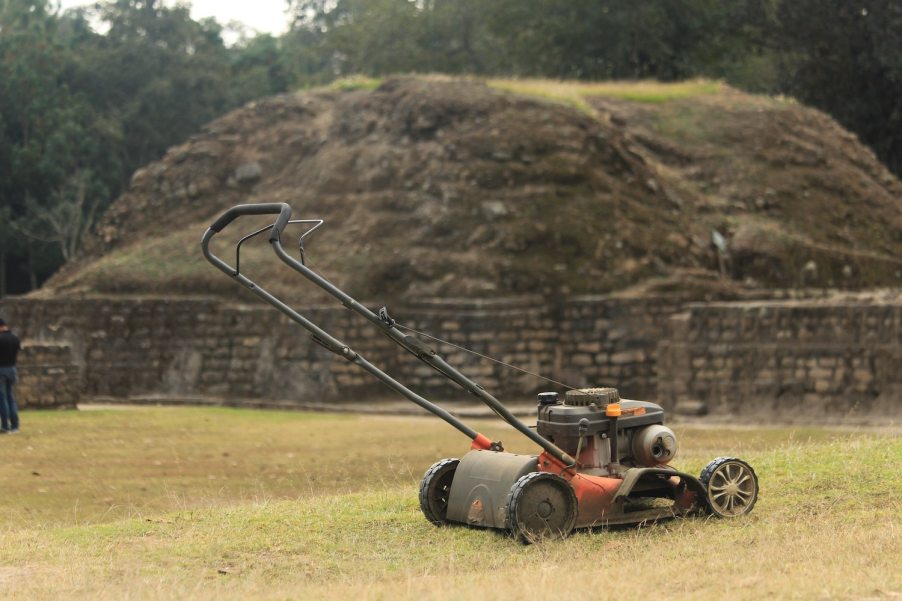
You’re Probably Not Changing Your Lawn Mower’s Air Filter Often Enough
It’s critical that your lawn mower can breathe easily to run properly and last a long time. Therefore, you must either clean or change your lawn mower’s air filter often. How often? That depends on the size of your lawn mower and the size of its air filter, but it ranges from once a year to once a month.
How often should you change a walk-behind mower’s air filter?
Walk-behind mower engines under 10 horsepower usually have a 5-inch by 7-inch filter or paper air filter. You’ll want to swap this every 25 hours of mowing, but make certain its not clogged at least once a month.

Ironically, the tiny filter on many small mowers requires more maintenance than the larger filters on larger mowers. Because dust and grass can easily clog up one of these filters and starve your engine of air, I like to give them a quick visual inspection every time I mow. Luckily, you can often find these attached to the carburetor and view them by simply pulling off the engine shroud.
If your walk-behind mower has a small paper filter, you can remove it and try to knock the dirt off of it. According to the Power Outdoors website, you can check whether a cleaned air filter is safe to run by holding it up to the light and seeing if any light shines through.
Some walk behind mowers have an upgrade: a similarly-sized foam filter. While this filter may clog up just as often, you can wash it out with water and dish soap. Simply take it inside, wash it like a sponge. If it is not excessively dirty or torn, you can dry it and reinstall it. Note: after a foam filter has dried, you will want to rub a little filter oil onto it.
Rare walk-behind mowers have a paper filter filament wrapped in a foam pre-cleaner. You can wash this pre-cleaner like any foam filter, and maintaining it will help your paper filter last longer.
How often should you change a lawn tractor’s air filter?
Larger lawn tractors tend to have a circular paper air filter wrapped in a sponge pre-cleaner. Its a good idea to swap out this paper filter once a year or after 200 hours of mowing. But you’ll want to wash your pre-cleaner after 100 hours of mowing, or when it’s dirty.

Lawn mower engines in the 12-17 horsepower range often have a filter with both a paper and sponge element. This is so you can do many hours of mowing in one season without buying a new, large paper filter. But to maintain this filter, you will have to wash the pre-cleaner throughout the season.
How often do you have to wash this pre-cleaner? It depends on how much debris you’re mowing through. It’s a good idea to examine it weekly until you get an idea of how quickly it clogs. No matter what, you’ll want to replace this paper filter at the beginning or end of every season.
How often should you change your riding lawn mower’s air filter?
Large riding lawn mowers, with engines over 18 horsepower, often will have a canister or air intake box with a filter inside. You can probably get away with doing 250 hours of mowing before you need to replace your filter, but you will need to clean it at least every 100 hours.

Powerful, ride-on mowers often have an air filter set up much more like you’d find on a passenger car than what you’d find on a walk-behind mower. This increased capacity means you can operate the mower for 10 times as long as a walk-behind before replacing the air filter. That said, if the mower has a sponge pre-cleaner you must wash that whenever clogged to preserve your paper filter.
Remember, if your pre-cleaner is ripped or excessively dirty, then you must replace it. In addition, if your paper filter is so soiled you can’t see light when you hold it up to the sun, you must replace it as well.
Next, read our extensive lawn mower service schedule. Or, see for yourself how to change a lawn mower air filter in the video below:



